Dating human beings in the summer: terrible idea. Who really thinks it’s a good plan to be canoodling with some 98.6 degree bag of skin, sopping wet with urea stinking perspiration welling from every pore?? Darlings, listen. Leave your hormones for humans at the front door, and run straight to your closet for romance! I have been dating my wardrobe for years, now, and I don’t regret my decision. Forget smelly mammals with opposable thumbs! Cool cottons and breezy hats make much better summer lovers. On my date to Sonnenberg Gardens, Canandaigua, NY, I chose my most compatible summer companions from my wardrobe: a light-cotton 1980s day dress, and a 1940s broad-brimmed straw hat. While my last summer date with my wardrobe ended in mild heat stoke, and far-out hallucinations, I was determined that for this date I would be as cool as a cantaloupe in June.

Sonnenberg Gardens was the perfect location for my date, not just because it’s a great place to impress a vintage hat, but because it boasts nine spectacular themed gardens of the world. Mary Clark Thompson was the living force behind the creation of the gardens, but the death of her husband, Frederick Ferris Thompson, served as the impetus behind the horticultural masterpiece. A few years after Frederick’s death in 1899, Mary set about creating a literal living memorial to her husband using one of the greatest creative mediums of the Victorian and Edwardian era: gardening. You want to tell a deceased someone that you love them, forget marble mausoleums like the Taj Mahal. Spell your Victorian mourning out in the bold language of flowers, water features and puddingstone-lined pathways.

The germ of cynicism which lives under the brim of my 1940s straw hat leads me to believe that the incredible gardens of Sonnenberg resulted primarily because Mary Clark Thompson found herself with more time on her hands, now, that Freddie was dead, and had access to large sums of money. Sonnenberg, after all, was merely the summer home of the Thompsons. Frederick was a prominent New York City banker, and Mary was the daughter of a New York governor. These people were not strapped for cash. Yes, I do not doubt that Mary was very sad that her husband had died, but I’m imagining that time and money were greater building blocks than grief.

Now, that I’m through with being critical of romantic tales of memorials, let me get back to the history of the gardens. So, Frederick dies in 1899, and soon after Mary begins her tour of famous gardens of the world. Among others, she surveyed classic Japanese gardens, tidy English landscape gardens, and formal Italian gardens. When she returned to her home at Sonneneberg, she was armed with research and inspiration. Between the years 1902 and 1919, Mary created her nine representations of classic gardening, boasting such thematic features as Roman baths, a Japanese tea house, and a devotional Greek temple for the goddess Diana. With an entire globe of gardening history represented in her backyard, I don’t believe that Mary had the time to mourn for old Freddie. She was too busy managing pansies and heliotropes.

One hundred years later, I can enjoy all of Mary’s efforts as an overeducated poor person, with a taste for romancing inanimate clothing objects. As I idly stroll through some of the most beautiful gardens in the world, with my purple dress swaying in the breeze, I have to appreciate that someone had enough money and means to create such a romantic landscape to roam. I also must appreciate the turn of events that made these historical gardens open to the public. Here’s a brief overview: Sonnenberg– which translates into “sunny hill”– was purchased as a 300-acre farmstead in 1863. In 1887, the farmhouse was replaced by a Queen Ann-style mansion. Frederick Thompson dies in 1899. Mary Clark Thompson developed the gardens between 1902 and 1919. In 1923 Mary dies, and, having no children of her own, the property goes to her eldest nephew, Emory Clark. He sells the property to the Federal Government in 1931, and the house and property were turned into a VA complex.

Over the course of 40 years, the property is vandalized, and generally just trashed. Realizing the historical significance of the property, a local citizen’s movement begins to purchase and restore a 50-acre portion of the estate and gardens in 1966. A formal bill transferring ownership of the property from the VA to Sonnenberg Gardens (a not-for-profit organization) was passed and signed into law in 1972. A year later, restoration work began, and involved mapping out and uncovering buried gardens, and taking down the partitioned and boarded-up mansion rooms. Between 1973 and 2003, Sonnenberg Gardens struggled to maintain the property, burdened by huge debts. Then, finally, in 2006 the Sonneneberg Gardens and Mansion was purchased by New York State. By the time we arrive in 2018, I can purchase a ticket to meander about 50 Acres of jaw-dropping beauty for $14. Considering the fact that I just spent $17 to stuff a bagel with cream cheese, and small latte down my gullet, I regard $14 for four hours of world-class culture and beauty a real deal.

The cultural moment in time which I was sampling on my tour of the home and gardens was the sweet, bountiful cusp between the Victorian middle-class boom, along with all of its Victorian bric-a-brac and manners, and a reactionary Edwardian Age, with its Arts-and-Crafts sensibility, and aesthetic shift to the “orient.” The Garden complex is a reflection of both Victorian and Edwardian garden aesthetics. At its foundation, the group of gardens exhibit the three major styles of Victorian gardens: Picturesque style, Neoclassical style, and Gardenesque style, but include elements of newer style developments that emerged during the Edwardian Era: Arts-And-Crafts and International Style. The Japanese rock garden– designed and built by a Japanese designer in 1906– adopts the conflated principles of the Victorian and Edwardian. The garden reflects characteristics of the Victorian Picturesque style, leaving old growths, rutted paths, and textural terrain in the design scheme, additionally embodying some of the design principles of Gardenesque style, showcasing exotic and indigenous plant specimens, using small-scale natural vignettes, and island beds as dramatic flourishes. But above all, the Japanese garden exemplifies the Edwardian trend in constructing International Gardens: dreamscapes of far-away places built in one’s own backyard, and the Edwardian Arts-And-Crafts garden, which includes seemingly untouched woodland glades, naturalistic water features, and rustic pathways leading through rock gardens.

Uniting the tea house, buddha statues, and gateways of the garden is a stream that passes under five bridges, in which case I am fortunate enough to have traipsed over each and every one. My favorite bridge to frolic across was the striking red Japanese-style bridge which afforded my vintage dress and me a fantastic view of the Lilly pads in the stream below. Thus, I began my romantic date under the cool shade of the specimen trees, and by the babbling waters of the Japanese garden. I can tell you that the evergreen laced breezes not only kept my amorous apparel from getting too hot and heavy but allowed me to enjoy an aroma that was the very exact opposite of the smelly human flesh of summertime.

From the Japanese garden, I walked to the Roman baths which are currently slated for renovation in the coming year. The original pool, styled after ancient Roman baths, was designed by architect Francis Allen. The pool complex boasted a slew of gracious changing rooms and restrooms, heated water, and, at its center, an aqua-blue gem of a pool, lined with turquoise English tile. So refreshing. So tranquil. Hold onto your hat, I’m ready to dive in!
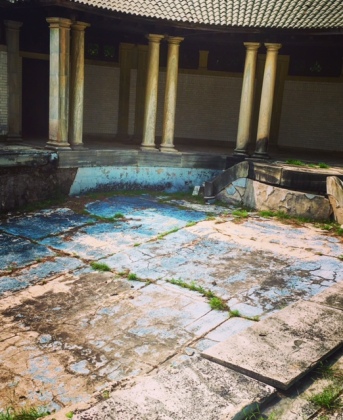
Only, not really. I was just pretending to dip my toes into the waters, wearing my Edwardian wool serge bathing suit, swim cap, and lace-up gum shoes. In real life, my purple dress and I had an imaginary swim amid the romantic decay of what appear to be ancient Roman ruins– a romantic fantasy which my 1940s straw hat wanted nothing to do with!

As my straw hat was too practical for musing over ruined Roman baths, I decided that I needed to find a spot that was more contained and orderly. Following a wooded, winding path, I eventually found myself in the Sub Rosa (below the roses) garden. Everything living in this particular garden is green. Green grass, green boxwood trees, green evergreens, green waters, and even a handsome green frog! This garden is so cool, crisp, and delightful, I could not help but repose (upon my hat’s approval!) by the white marble fountain, which is presided over by statues of Zeus, Artemis, and Apollo. While it was an honor to be amongst the gods, I was more interested in having a conversation with the denizen of the fountain– a little green amphibian which I named Miguel Ángel He was absolutely charming and had the most beautiful glossy green nose. However, my purple dress and hat became pretty jealous of my interest in Miguel Ángel, and I had to move on to the next series of absolutely stunning gardens, including the Italian garden, the rose garden, the old-fashioned garden, the pansy garden, the blue and white garden, the moonlight garden, and the old-fashioned garden.
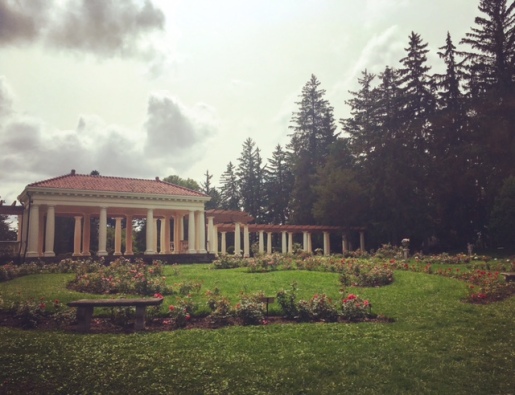
Dear Readers: the nine gardens of Sonnenberg Gardens are so beautiful that I’m not going to bore you with an exhaustive list of adjectives describing each– which include, but are not limited to, words like “beautiful,” “gorgeous,” “dazzling,” “dizzying,” “dramatic,” “beguiling,” “mesmerizing,” and “freaking good.” And I haven’t even gotten to the point in my date where I toured the interior of the Queen Ann-style mansion!


The modest, little 40 room summer residence of Frederick Ferris Thompson and Mary Clark Thompson was designed by architect Francis Allen, and built between the years of 1885 and 1887. As I entered the home, my fashionable cotton and straw date was bathed in the most delicious lighting, pouring like nectar from the bay windows. If you want to look good on your date with your lover (textile, or otherwise), this is the place to be! The lighting inside of Sonnenberg Mansion was better than the lighting designed for Elizabeth Taylor’s White Diamonds perfume advertisements, first airing in 1991! Take your dear amour to this parlor, and let them see you in this light. They will not let you out of their sight!
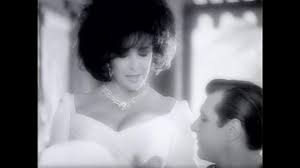
As for me, I found the lighting particularly lovely in Mary Clark Thompson’s bedroom, which is covered wall-to-wall in the most beautiful art nouveau style wallpaper. Talk about the perfect compliment to my wardrobe!

At this point, my woven sartorial lovers were thoroughly impressed with the date I had arranged at Sonnenberg Gardens and Mansion. We whispered sweet nothings to one another in the privacy of the pansy garden, mused over our future together, playing-out domestic fantasies as we toured each room in the Sonnenberg mansion, and vowed our eternal love for one another near the ruins of the temple to Diana. How could this date get any better?! I’ll tell you how. World-renown glass houses. Glass houses. Many, many glass houses.
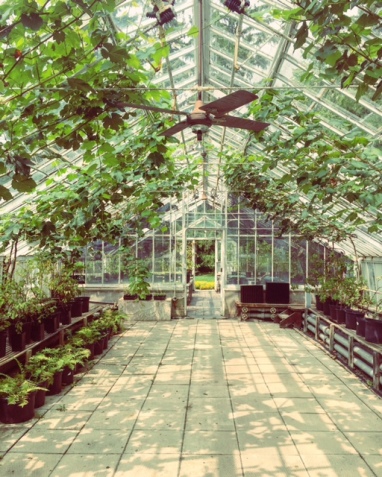
I have always been a lover of the glass house. To begin, I have invariably adhered to and respected the proverbial wisdom given to people who live in glass houses. I may walk around looking super cool, and in the company of an amazing wardrobe, but I am, in fact, just a fragile human who fears someone reminding me of my many flaws. Therefore, I will not be bandying about proverbial stones. Furthermore, glass houses are simply stunning. They shine like jewels in the sun, sparkling with promise in the distance. Once inside the glass house, you are not disappointed. The interior is filled with verdant greens, delicate flowers, or prickly cacti. Second only to my wardrobe, plants are the best company to keep.

Sonnenberg Gardens boasts what is considered to be one of the United States’ most important residential greenhouse complexes, which were manufactured by Lord and Burnham. If you please, you can walk through several of the refurbished glass houses, including a remarkable domed conservatory, and peer into the romantic decay of the glass houses yet to be repaired.

The Sonnenberg greenhouse complex was born out of the hey-day for glass house construction. There are several reasons that the Victorian and Edwardian era became the cultural incubator for glass house popularity in England and America. To begin with, there was a middle-class boom in England and America, an extension of Colonial reach, and the expansion of the world market. Importantly, the glass tax was repealed in England in 1845, and the window tax in 1851, reducing the cost of a structure made almost entirely of glass and windows.


Additionally, exotic plants became more readily available on the English and American market, and plant cultivation and collection became increasingly sophisticated, eventually developing into an all-out plant craze. Victorians were ga-ga for greenery! Finally, technical and material innovations of the Industrial Age spilled-over into glass house manufacture. The mechanization of paint and brick manufacture, increased production of wrought and cast iron, cheaper manufacture of glass, and lighter construction materials (combination of composite wood, and cast and wrought iron) made glass house construction easier, cheaper and more available to the masses. Combine all of these factors into one cultural crucible, and the end result is an increase in glass house popularity. The glass houses of Sonnenberg Gardens are exceptional examples of this popular movement.
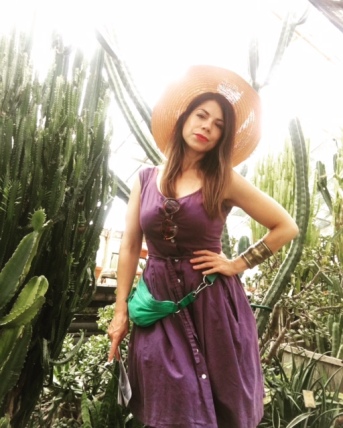
And this is where I ended the date with my vintage duds– within the exceptional confines of the glittering glass structures of Sonnenberg Gardens. As I stood in the center of a glass house filled with cacti, I finally felt a bit flush. My vintage dress and hat and I had traversed a summertime landscape of remarkable beauty together, never breaking a sweat. Now, suddenly, I felt a warmth wash over my body, and radiate from my darling purple dress. While I could blame this moment of heat on solar radiation, and containment (AKA the greenhouse effect), or the way in which my purple dress was hugging me so dear, I like to think that I was warmed by a love which radiated from the cockles of my little heart. If I have learned anything about glass houses and their relation to people, those who live in glass houses will radiate with warmth. And that is– after all– not a bad thing!
Appendix
The Following Images can be found on the New York Heritage Digital Collection Site,
from Mary Clark Thompson’s personal photo album, 1907

Temple of Diana (1907)
“Erected in 1905 at the western edge of the pergola. The classical structure contained Diana, the Goddess of the hunt. Pillars are made of marble, and a reinforced cast mortar temple dome represents early use of this material. Unfortunately, the structure suffered extensive deterioration over the years. It was dismantled in 1999 for safety reasons, and the statue (of Diana) moved to the Blue and White Garden.”

Fountain of Neptune, Italian Garden (1907)

Japanese Garden (1907)

Orchid House (1907)

Italian Garden and Pergola (1907)

Old Time Garden and House (1907)
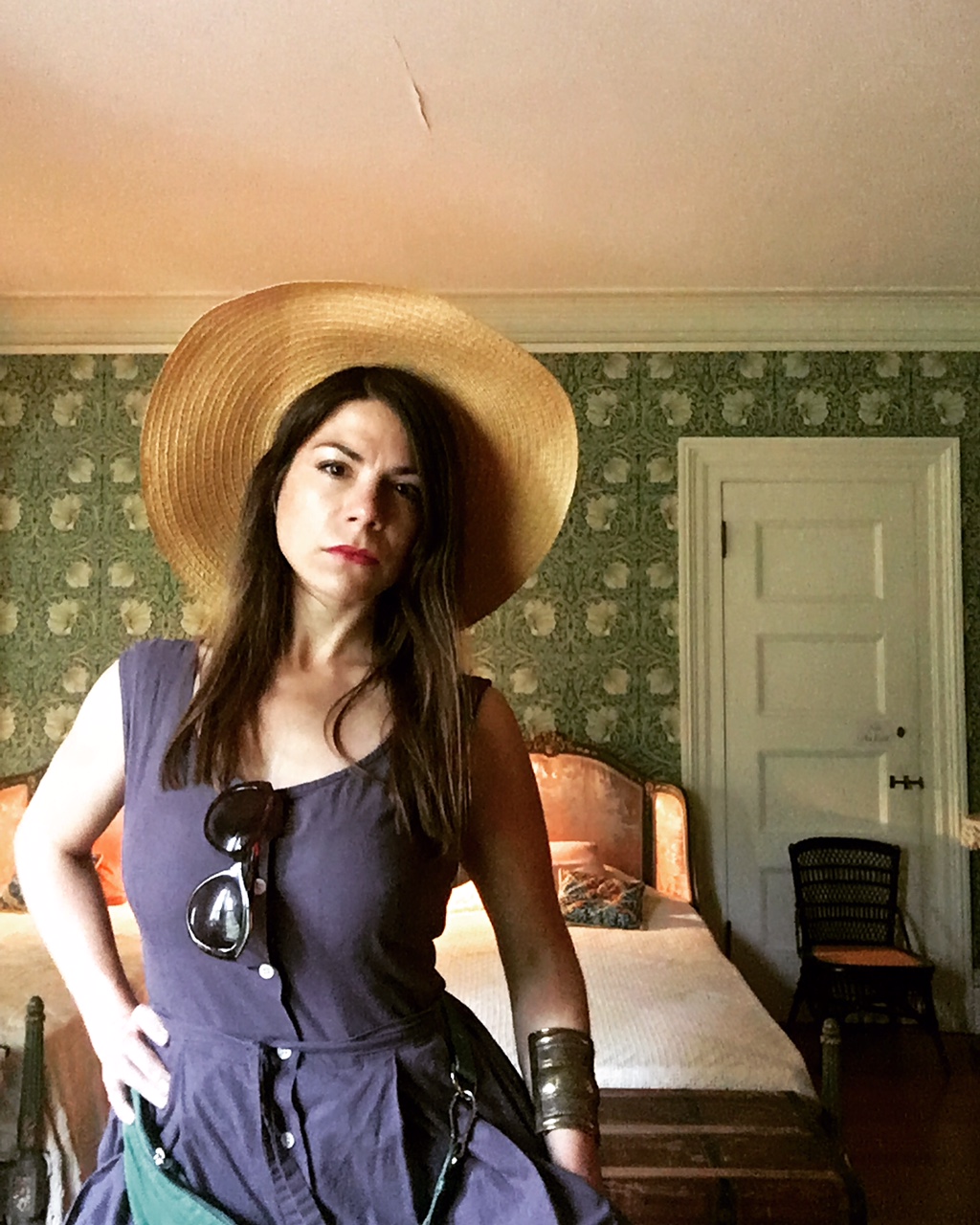
This is completely lovely! What a story! Such beautiful gardens and the house is A WOW for sure 🙂
I hope that you can visit the gardens in person. It’s quite the experience!
I’m so glad I found this piece. You have an incredible amount of research put into this. I myself have recently put together an essay on Sonnenberg Gardens, where I dressed in Victorian attire as a kid – my grandmother was a seamstress for the mansion, and a lot of the clothes there were made by her. You’ve captured a lot of what is important to me, personally, and I’m thankful to see it is still making a good impression on people today.
I really enjoyed this, thank you so much for sharing.
How kind! I must read your blog piece on Sonnenberg Gardens. It’s quite an incredible place, and it sounds like you had quite the remarkable childhood!
Splendid post, brilliant and instructive. So sad, though, that the greenhouse and the pool are so derelict.cheers
Thanks, Florence! Luckily, the greenhouses and pool are being refurbished! Hoorah! 🙂
Thanks awesome news!
Ruins are romantic and all, but I’m happy to say that the pools and the greenhouses are being renovated, slowly but surely! 😀